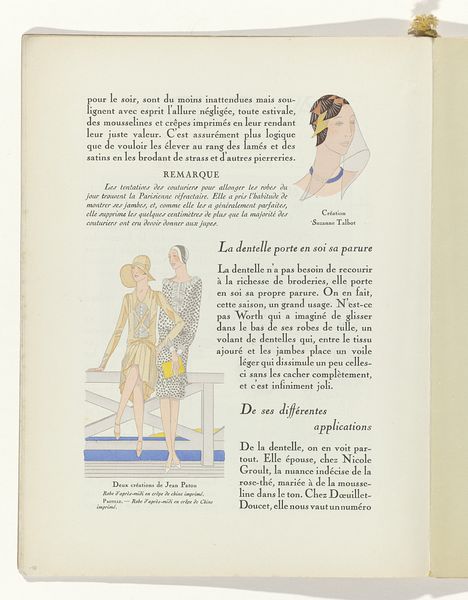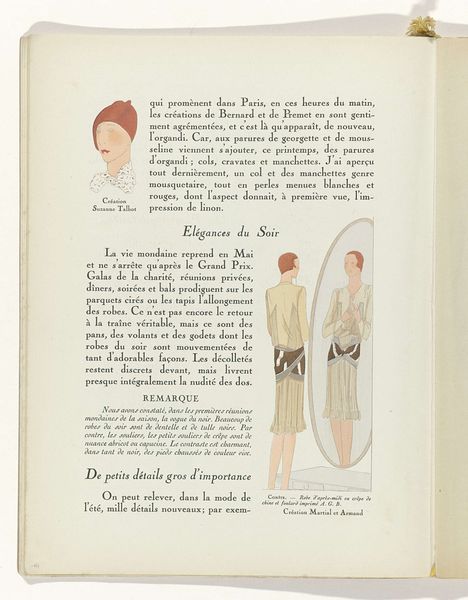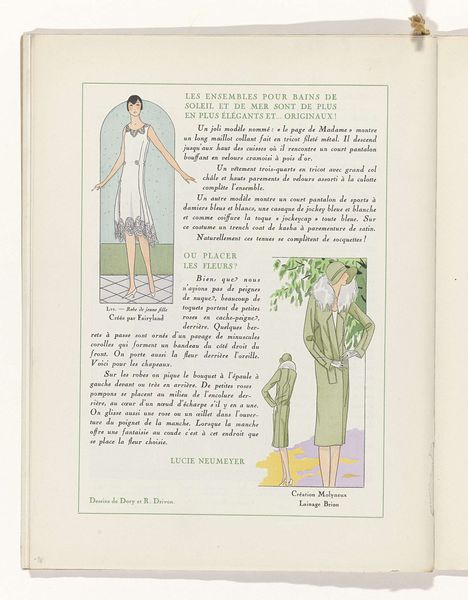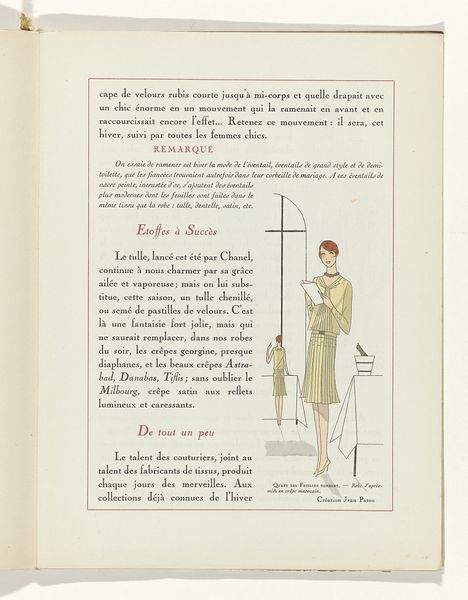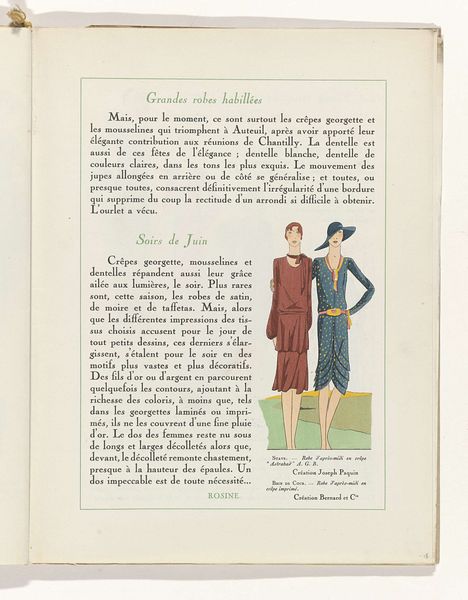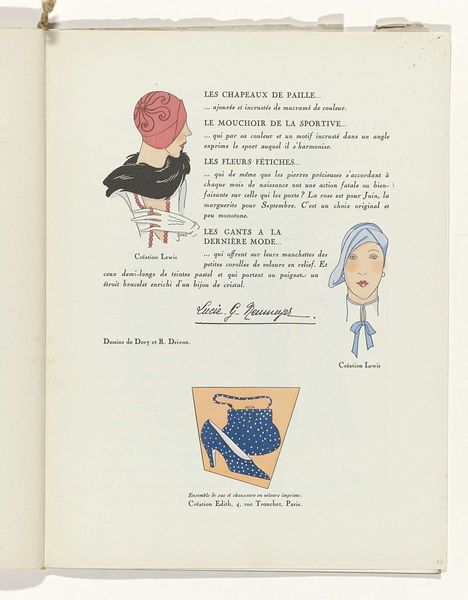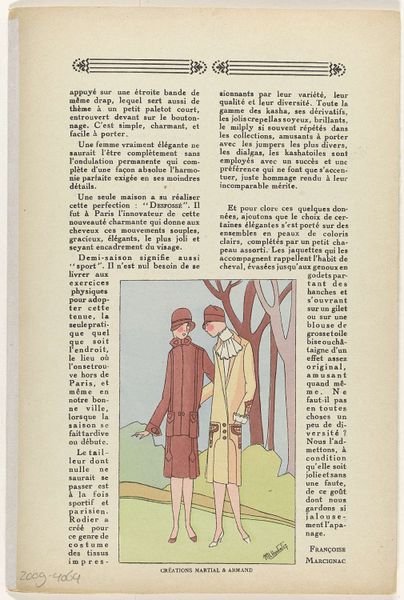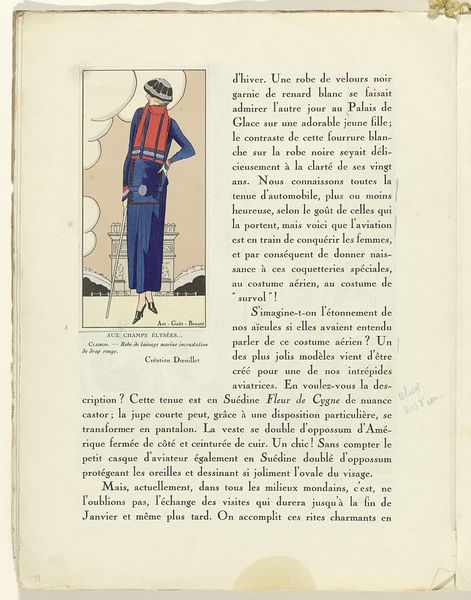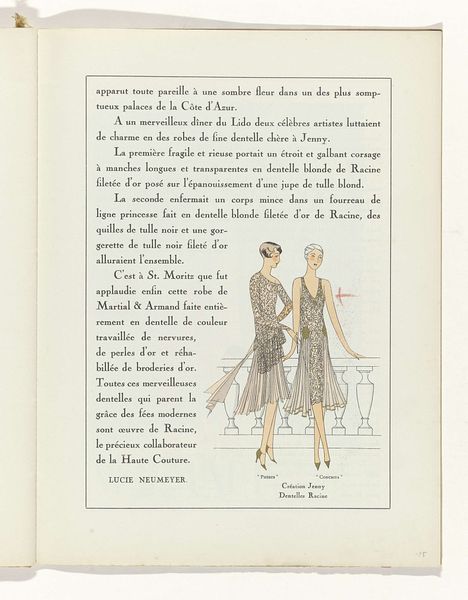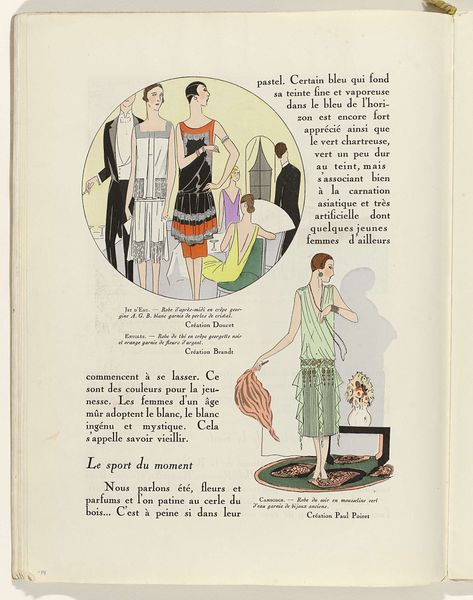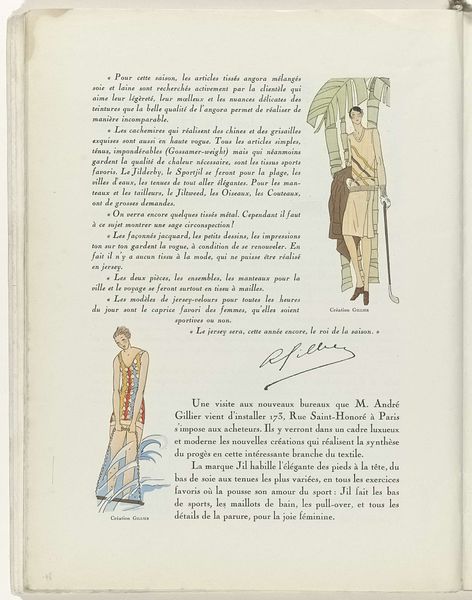
Art - Goût - Beauté, Feuillets de l' élégance féminine, Mai 1929, No. 105, 9e Année, p. 21 1929
0:00
0:00
drawing, graphic-art, mixed-media, tempera, print, paper, ink
#
portrait
#
art-deco
#
drawing
#
graphic-art
#
mixed-media
#
tempera
# print
#
figuration
#
paper
#
ink
#
line
#
cityscape
#
watercolour illustration
#
decorative-art
#
dress
Dimensions: height 315 mm, width 235 mm
Copyright: Rijks Museum: Open Domain
Curator: This lovely image comes from a 1929 edition of "Art - Goût - Beauté", a journal showcasing feminine elegance. It’s the work of R. Drivon. Editor: Immediately, I see the application of flat planes of color and strong outlining which strikes me as perfectly capturing the visual language of Art Deco. Curator: Precisely! "Art - Goût - Beauté" positioned itself as a key arbiter of taste, reflecting and shaping the flapper fashion and lifestyle during the Roaring Twenties. Publications like this really democratized access to elite trends. Editor: That's an interesting point about access because you see that even the making of this, which looks to involve some tempera, inks and printing processes, hints at the burgeoning culture industries that spread these designs. It’s not unique, artisanal creation but rather a commodity intended for broader consumption. Curator: The journal wasn’t just showing dresses. It was selling a whole idea of modern femininity, freedom and style. We see that here, not just in the clothing depicted, but in the active, outdoor poses of the women. They’re engaging with the city! Editor: True, but let's not romanticize it too much! These images are meticulously constructed, perpetuating an ideal more than reflecting reality. Think about the labor involved in producing the clothing itself - where is the factory or the seamstress in this picture of effortless elegance? Curator: Certainly, the magazine participates in creating desires and anxieties within its female readership. The democratization of fashion came at a cost: increased pressures of conformity. Editor: Indeed. This isn't just an innocent picture of pretty dresses. It is evidence of fashion as an increasingly industrialized phenomenon, and what that implies. Curator: I find myself admiring the subtle, subdued color palette contrasting with the sharp geometric design, both capturing the spirit of interwar design so perfectly. Editor: It definitely provides a snapshot into a particular historical moment and the evolution of visual and material culture.
Comments
No comments
Be the first to comment and join the conversation on the ultimate creative platform.

